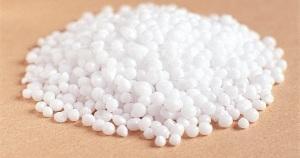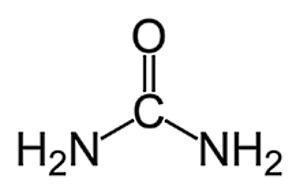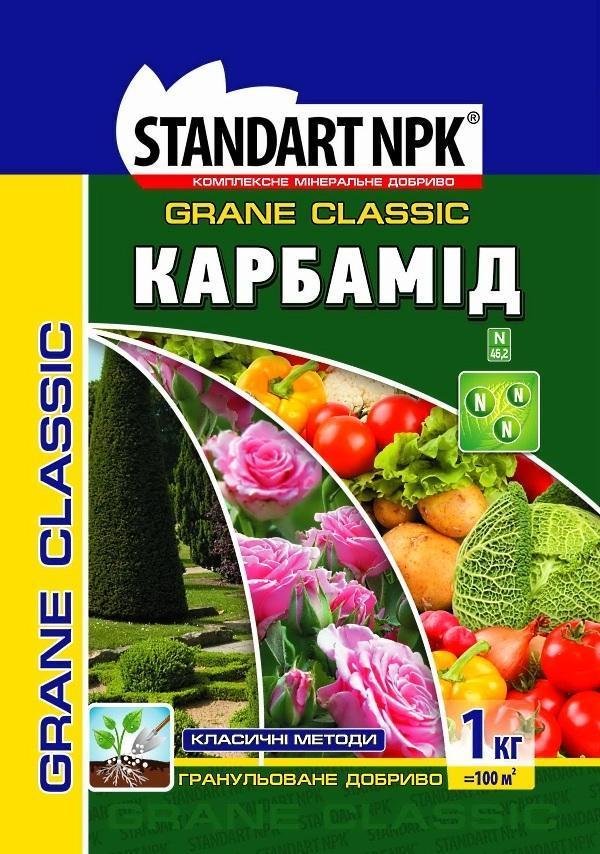Carbamide - nitrogen fertilizer for soil
 Every summer resident who grows vegetables and fruit and berry plants on his personal plot knows a lot about fertilizers that should be used in order to achieve the highest yields. Among the group of self-prepared fertilizers and industrial products, nitrogen fertilizers are of particular interest. It is nitrogen that is often not enough for many plants for full-fledged vegetative development and effective fruiting.
Every summer resident who grows vegetables and fruit and berry plants on his personal plot knows a lot about fertilizers that should be used in order to achieve the highest yields. Among the group of self-prepared fertilizers and industrial products, nitrogen fertilizers are of particular interest. It is nitrogen that is often not enough for many plants for full-fledged vegetative development and effective fruiting.
One of the most popular nitrogen fertilizers is carbamide. This is the so-called popularly ureacontaining fifty percent nitrogen. The chemical formula of carbamide is as follows.

Urea is often produced in granular form. The packaging of the obtained granules in many cases differs, since the applied doses are always calculated from the soil areas. If nitrogen fertilizer is applicable at a summer cottage, then you can purchase a package of one or three kilograms.
 If whole field lands are cultivated, then it is advisable to purchase urea in polyethylene bags.
If whole field lands are cultivated, then it is advisable to purchase urea in polyethylene bags.
 Urea fertilizer is the hardest substance in structure, which is not able to absorb excess moisture from the environment, and therefore has a long shelf life, excellent free-flowing qualities, due to which it is very well dispersed during use in practice.
Urea fertilizer is the hardest substance in structure, which is not able to absorb excess moisture from the environment, and therefore has a long shelf life, excellent free-flowing qualities, due to which it is very well dispersed during use in practice.
The main advantages of using urea:
- nitrogen fertilizer has the property of regulating the growth of the vegetative mass of any plant species;
- the introduction of urea during the cultivation of grain crops increases the protein and gluten content in the resulting grain yield;
- high yields of all crops are directly dependent on the sufficient nitrogen content in the soil on which they are grown.
Appropriate use of urea
If you want to fertilize the soil with any kind of fertilizer, you always need to know the application rate, so as not to harm, but on the contrary, to create the most favorable conditions for the development and growth of planted or planted plants.
Urea as a fertilizer can be used in a granular state or in a dissolved liquid form.
The application rate of urea for different crops is different, below are the application rates before sowing:
- rapeseed, barley, wheat, rye - two kilograms per hundred square meters of the future sown area;
- potatoes, fodder and sugar beets - two kilograms per hundred square meters;
- onions, tomatoes, carrots and cabbage - twenty to thirty grams per square meter of sown area.
In order to feed and replenish already planted crops, the following standards apply:
- for rye, rapeseed, wheat and barley, one and a half kilograms of carbamide are introduced per hundred square meters;
- for fodder and sugar beets, as well as potatoes - one and a half kilograms per hundred square meters;
- for corn, orchard fruit trees and shrubs - ten grams per square meter.
To feed rose bushes and vegetable seedlings, a special solution is prepared with the content of such proportions: 90 grams of carbamide is dissolved in 10 liters of cold water.
The main point when fertilizing the soil is not to overdo it with the amount of nitrogen, since an overabundance can negatively affect seedlings and already accepted seedlings.
You should know that nitrogen fertilizer urea must be embedded in the soil, since the chemical reactions of urea elements with soil bacteria are instantaneous, urea in a short period of time turns into ammonium, which evaporates too quickly, and this, in turn, causes the loss of nitrogen, which is so necessary for the soil in order to supply plants with useful substances ...
If feeding is carried out by scattering granules manually or by a mechanized method, then after a mandatory attribute, abundant watering of fertilized agricultural plantations should be performed.
Often, carbamide is mistaken for nitrate. However, these fertilizers differ in structure. Saltpeter is less resistant to wet conditions, while carbamide perfectly fulfills its purpose in various soil areas - arid and too wet.
In the first days of application, urea manifests itself as a slightly alkaline fertilizer, which is very useful for acidic and slightly acidic soil soils.
Nitrogen fertilizer introduced into the soil can be completely absorbed by growing plants, and it can also remain in a certain percentage in the soil, however, being in it, carbamide does not change its chemical composition and has a beneficial effect on subsequent planting of plants.
Urea is very loyal to the effect on foliage and shoots, it is not able to burn plants, like saltpeter, therefore it is applicable both for external treatment of crops and for root feeding.
A detailed description of such a well-known fertilizer as urea is very useful. Each of their chemical reagents has its own purpose and time of use. The material describes in detail the use of urea. This is the cheapest fertilizer, but its efficiency is high. Urea is also used in compost if you need to speed up the process. I can share my experience of making "old" sawdust. Usually, in spring, I prepare a soil ripper from fresh, with a pungent smell of turpentine, sawdust. I use a tablespoon of dissolved urea on a bucket of sawdust. I fill it with the solution until it is wet, cover it and during the summer I get old sawdust, which I add to the soil, making up a mixture for seedlings. I drive them onions for greens. New for me was the use of urea for late spraying of the garden against diseases and wintering pests. I really liked using urea in a mixture with vitriol for spring garden processing. Delaying the flowering of a garden for 10 days in Siberia gives a lot. Late frosts in our country are almost obligatory precisely during the flowering of the garden. And so, without any extra effort, you can save trees and shrubs from aphids, weevils and fungal diseases.
Please tell me the rate of root top dressing of winter wheat with carbomide. Thank!)
To increase the yield of winter wheat, it is necessary to apply from 30 to 60 ka per hectare. To increase the protein content in grain, the rate is increased to 100-120 kg per hectare. This rate is divided into several stages of application. fractional application gives the maximum effect. It is also necessary to take into account the composition of the soil. For clay and loamy soils, the rate is reduced.
please tell me the rate of irrigation with carbomide for soybeans and corn
For corn and sunflower with foliar feeding in the phase of 10-12 leaves, the concentration of urea solution should not exceed 8%. Burns will occur at higher concentrations. In later stages of development, when their leaves coarsen, they are already able to withstand even 20% urea concentration. At a working fluid consumption of 200-25 l / ha, the urea consumption rate for corn is 3-3.5 kg / ha, and for sunflower is 1 -1.5 kg / ha.
in what phases do you need to add carbomide